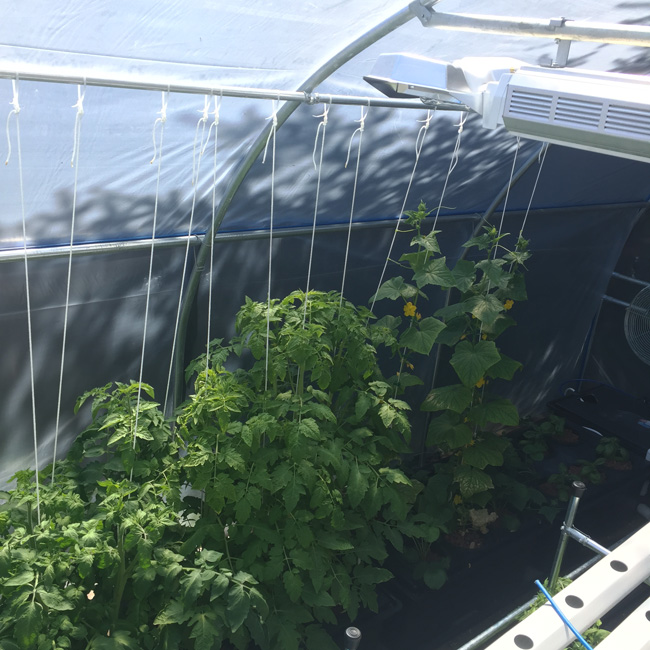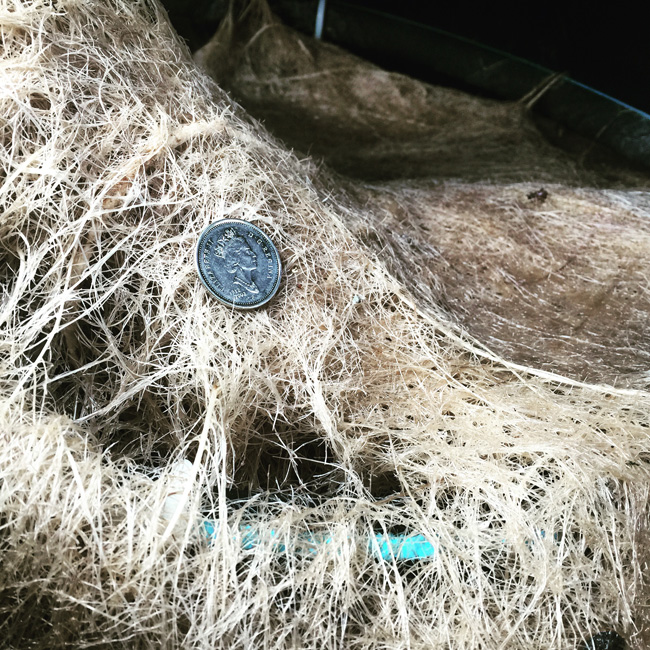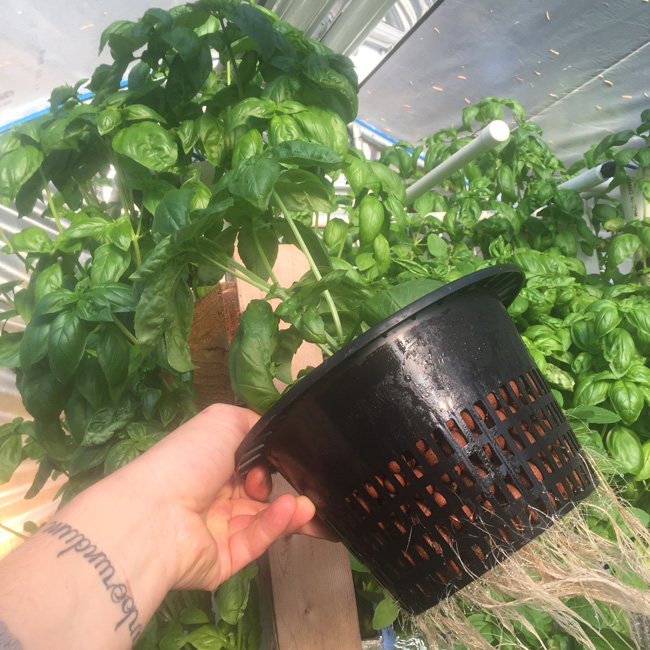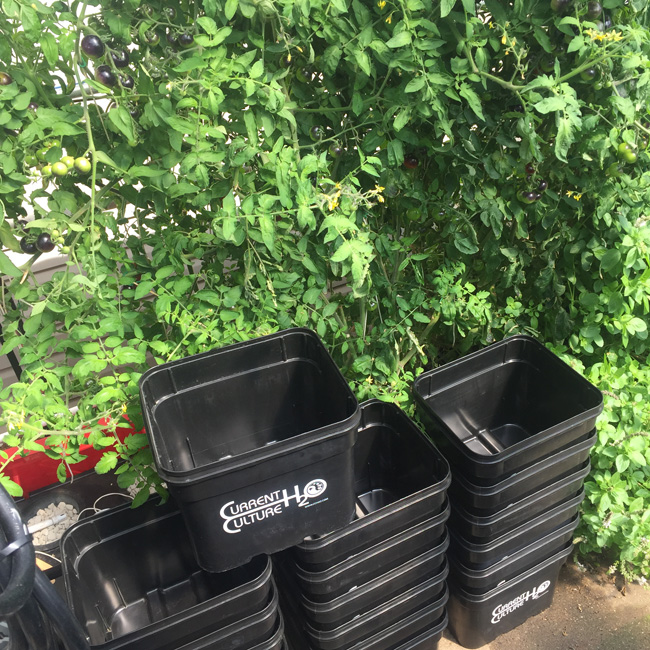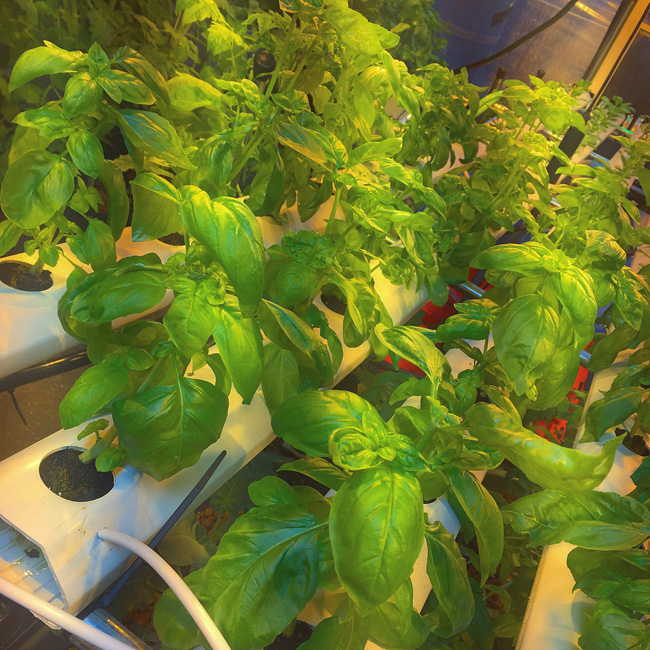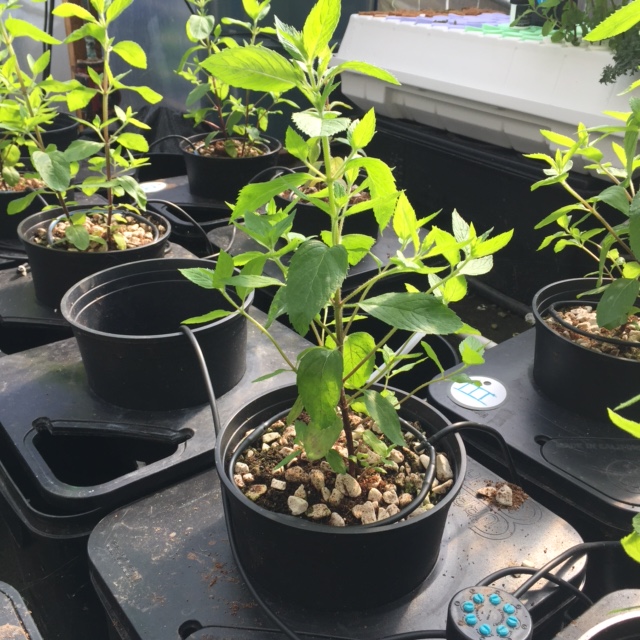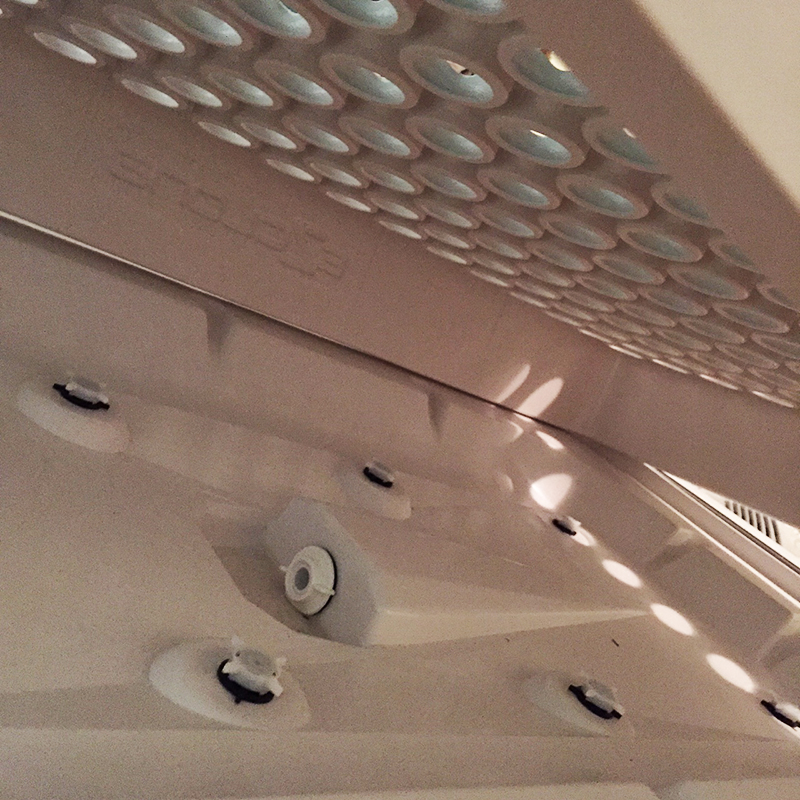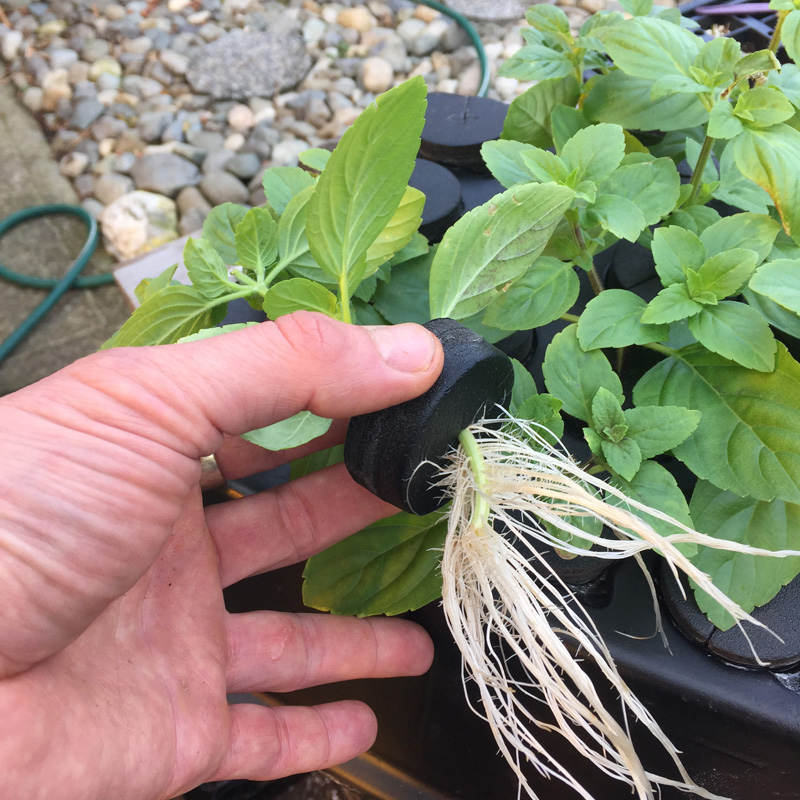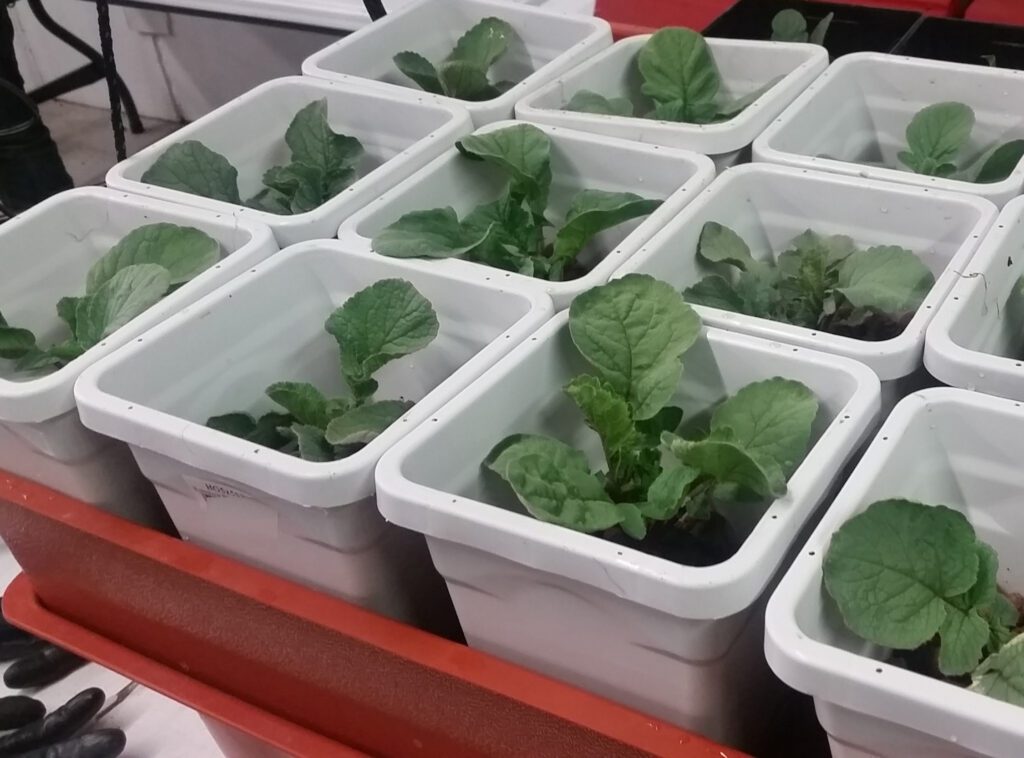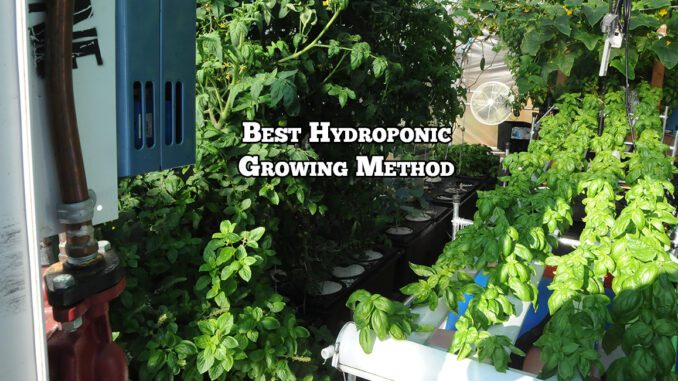
Best Hydroponic Growing Method
How To Choose the Right Hydro System for You.
What is the Best Hydroponic Growing Method for you? Let’s start right at the basis or root of the term. The word “hydroponic” comes from the Greek language and translates to “growing with water”.
While all plants require water, the big difference in hydroponics versus soil growing is that the plant roots are supplied with a nutrient solution, and do not rely on natural decomposition or other cycles to produce elements like Nitrogen, Phosphorous, Potassium, Calcium, Sulfur and others that are essential for a plant’s health in completing the life cycle.
[quote]The best hydroponic growing method is somewhat dependent on the particulars of an individual growing situation. The following review list of the top best hydroponic growing methods can help you better make a choice that’s right for you.[/quote]
With proven hydroponic growing methods and balanced, well formulated nutrient solutions (supplied as complete hydroponic fertilizers dissolved into water) crops can receive uninterrupted water and mineral/nutrient absorption, ie there is no competition with microorganisms or soil retention properties for the elements they need. Think of putting a drinking straw into a cool glass of your favourite beverage on a hot day, that’s how your plants feel when growing in hydroponics.
Besides uninterrupted crop feeding potential, there are many benefits to hydroponic growing methods including:
-no or reduced bulky or messy materials to buy or replace versus soil, the majority of roots remain uncovered by substrate (while protected in the system) and grow directly into oxygen and mineral rich solution
-easy and accurate control of fertility levels and pH, so plants remain in prime condition through different stages in their life cycle
-significantly less water is lost to the air through evaporation with closed hydroponic systems, with water loss reduced by as much as 50% per crop versus conventional growing methods and watering
-the principles of thermodynamics can save big on electricity otherwise used for cooling equipment, with hydroponics you can chill the nutrient solution instead of the air; it’s the plant’s core temperature that counts (think of putting your feet in cool water on a hot day)
The best hydroponic growing method is somewhat dependent on the particulars of an individual growing situation. The following review list of the top best hydroponic growing methods can help you better make a choice that’s right for you.
The best hydroponic growing method for your situation should will work on some key principle to be discussed further along in this article, however, even the Pros can overlook some of the following Points of Consideration when selecting a specific hydroponics system.
Hydroponic System Points of Consideration
Inert
The system is constructed of sterile and hygienic materials that are easy to clean, and will not react with mildly acidic and mildly saline solutions. In short, don’t use materials that can rust, corrode or possibly leach toxic substances into the solution your plants feed from. ABS, Polyethylene, Stainless Steel and some types of PVC are acceptable.
Sound Structure
If your system doesn’t remain leak tight or will buckle under the weight of your healthy crop, it is not likely going to be up for consideration as a best hydroponic growing method for you. Don’t underestimate the weight of a healthy crop, as plants are about 90% water and one later of water weighs 1KG or 2.2LBS! The material should also be able to withstand strong light without fading, cracking or becoming brittle. Make sure your system will finish as sturdy as it started out, so it can be reused near indefinitely.
Easy to Set Up & Maintain
The best hydroponic growing method designs take something rather complex and make it seem simple, both in operation and set up. For example seeing a labyrinth of irrigation tubing connect each plant and/or drain may look impressive, but each connection you see can be a potential for a clog or blockage and adds a lot of time to your setup while making it laborious to change planting configurations if your plant spacing needs change over time. That said, there ARE great Drip & Drain to Waste systems that have fail-safes built in to them and that do offer offer a level of flexibility
In short, the fewer the parts the better—but let’s not over simplify things here too greatly either; think “effective & simple”.
The World in Not Flat
If you have a totally level surface that matches the foot print of your desired hydroponics system, consider yourself lucky! Most floor surfaces will have some kind of gradient or unevenness to them—will you be able to level your system out easy enough? Sometimes a few shims is all that’s need to create a “level world” for your system, while other systems may require you to have an even slope, ie gravity drainage or flow.
Does it Travel Well?
Let’s face it, your system will not appear where it needs to be on it’s own. When it comes to the best hydroponic growing method for your situation, this is not a factor you will want to overlook. Systems that stack together or pack up tight can save you lots of costs, hassles and possibly damage versus larger cumbersome pieces like flood tables that won’t fit in an automobile or be easily handled by a courier.
Now that we have gone through our list of the all-too-often overlooked Points of Consideration in determining the best hydroponic growing method for you, let’s have a look at some key operating principles that make the best hydroponic systems so successful.
Best Hydroponic Growing Method #1, RDWC (recirculating deep water culture)
The Under Current System by CCH2O.com is the best known and patented RDWC and has undergone several evolutions over the years while adhering to the success of the foundational principle of re-circulating a significant volume of very highly aerated nutrient solution via water pump around bare roots covered by lids that support larger plants up top.
This method requires a significant volume of water to fill the system, however, in the course of a crop, it uses much less versus conventional growing methods or some other hydroponic growing methods. Unlike many hydroponic systems, the UC (under current) series of systems are intended to operate with “top ups” rather than weekly dumps of solution, which can be wasteful and costly.
At Grozine, we can run a long term crop like tomatoes for 6 months in the Under Current System, highly successfully, without ever having to change the solution over. A float valve can add RO water from storage as needed, by simple gravity.
We increase fertilizer levels as necessary after taking readings daily or every other day. Here’s an example of a great RDWC Crop Feeding Program that does not call for system dumps: CLICK HERE
It its worth noting, that hyper-aerated solutions (lots of oxygen for roots, ie >1.25 LPM air per US Gallon of Solution) that occur in the UC Series require much lower fertilizer levels versus other methods, for example 1/4 strength of usual is plenty. We grow eight foot tall tomatoes with LOADS of fruits at only 450 PPM (parts per million) TDS (total dissolved solids).
PRO Tip: Add at least 75% of your fill or top up water as RO Filtered or Rain Water for best results, and differences you can see and taste. ie, mix 3 parts rain or RO Filtered Water to 1 part tap water.
Best Hydroponic Growing Method #2, NFT (nutrient film technique)
NFT (nutrient film technique) has been used successfully for many decades, and for it’s simplicity NFT is a highly effective hydroponic growing system. In our experience, NFT is best suited to fast turn-over crops like leafy greens or when using SOG (sea of green) growing methods. Basically, one of the very best systems when plants can finish at less than a couple feet tall at maturity.
The AmHydro NFT channels (covered troughs with planting holes) we use at Grozine are made from Food Grade Polyethylene, are super light to handle and have proven to be virtually indestructible. When cleaned between crops, they look brand new again; nothing sticks! One of our favourite aspects is how quickly they set-up and come apart; only hours, not days are required to set-up a large scale system.
The flow of nutrient solution that travels from one end of the NFT trough to the drain/re-capture end is shallow and fast moving, so it does not heat up quickly (ie limited exposure to warmer temperatures outside the reservoir shaded beneath the NFT channels).
Since the system largely relies on gravity (only a small pump is needed) it requires very little electricity to operate and smaller pumps are less prone to heating up nutrient solutions (which are best kept below 75 degF in most instances)
Best Hydroponic Growing Method #3, Top Feed Soilless
Top Feed Hydroponics is a widely adapted growing method that has been in play for decades. Essentially, plants are supported in containers, cubes or beds and are fed nutrient solution via irrigation from the top, which then drains down to the root, drawing in fresh air and delivering water and nutrients.
In our 2018 listing of best hydroponic growing methods, this may be one of the least “hydroponic” methods featured as a higher percentage of roots will be growing in a substrate like peat or coco mix versus others, where roots remain bare and immersed in a moving nutrient solution.
That said, this can be a very forgiving method for that same reason, ie there is a substrate to buffer the nutrient solution. So, if you make a mistake in your feeding levels or pH, you will have more time to correct it. Further, if there is a power outage, plant roots will not dry out quickly because substrates like coco or peat tend to hold moisture.
The Elite Garden Top Feed System HERE is a great example of a well though-out and modernized top feed growing method that can be adapted to automated waterings or manual watering. It is very well suited to growing larger plants under greenhouse or indoor conditions
[youtube width=”560″ height=”315″ video_id=”epBMmOwHk18″]
Best Hydroponic Growing Method #4, Aeroponics
Aeroponics might be considered a hydroponic system because, as the Greeks say, it IS “growing in water”, ie no media around roots. The fundamental difference with aeroponics versus other hydroponic systems is that the nutrient solution is delivered as a mist or a spray, essentially showering bare roots. The result is a very highly love of oxygen around roots, booths DO (dissolved oxygen) and ambient oxygen.
We could easily rank Aeroponics as the #1 hydroponic growing method, performance wise, but reserve to do so only for propagation, like rooting cutting as transplants or starting seeds.
For the latest in Aeroponic Rooting Technologies, Check THIS
The reason for this thinking is that in our experience any fine nozzles can and will clog over time—so for longer term crops lasting more than few weeks, sticking your hands into the aeroponic misting chamber to clean mist nozzles or sprayers is tedious while hurts root systems and is more easily prone to having root systems dry out due to clogging. However, for producing cuttings, starting seeds or growing very fast crops like micro greens, the super oxygenated levels that aeroponics offers can’t be beat!
Best Hydroponic Growing Method #5, Ebb & Flow AKA Flood and Drain
Flood and Drain or sometimes Ebb and Flow is a well established and proven growing method, although not very “hydroponic” is most instances.
Flood and drain systems can easily be constructed at home using home built plywood “flood tables” lined with polyethylene plastic and filled with growing aggregate like expanded clay pebbles or grow stones. Via a water pump and timer, the solution is pumped into the growing bed from a reservoir until partially filled. Following, the pump shuts off, and the solution from the bed drains back into the reservoir.
Overall, the systems can be reliable and more productive versus conventional gardening methods. Of further benefit, is that the grow aggregate can be cleaned and reused many times and is also well suited to using organic nutrient additives, while organics are typically not recommended in most hydro systems (unless using an organic nutrient specifically made for water culture methods).
Stonewool blocks or slabs are also very popular substrates for use in flood and drain hydroponics systems, although typically not recommended for use with organic nutrients.

